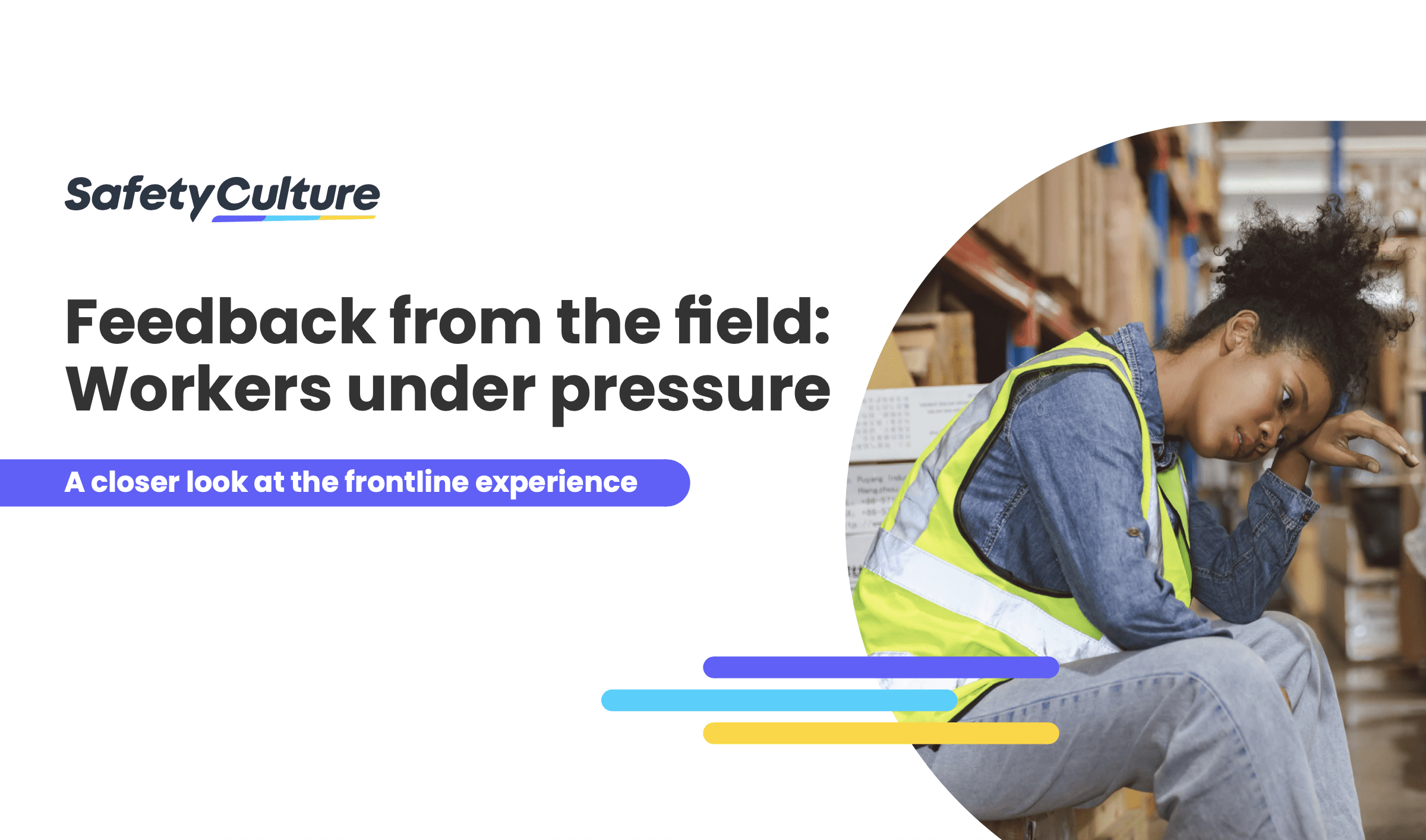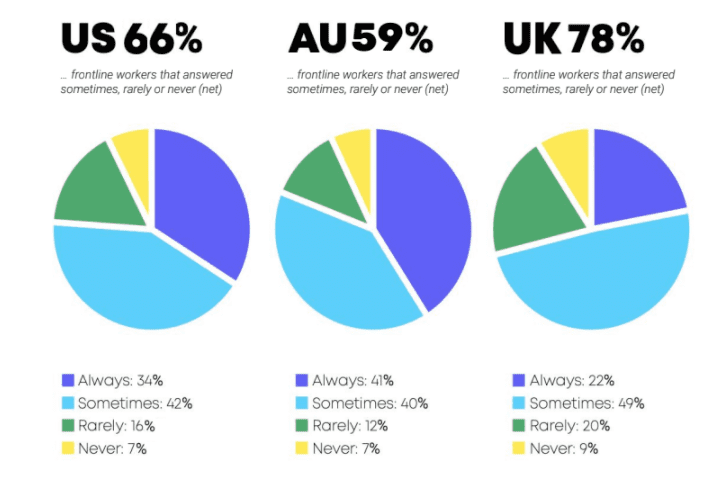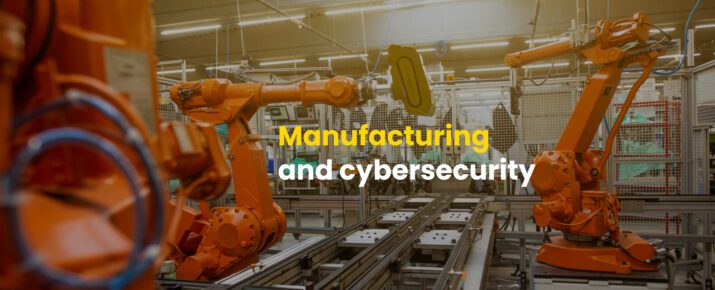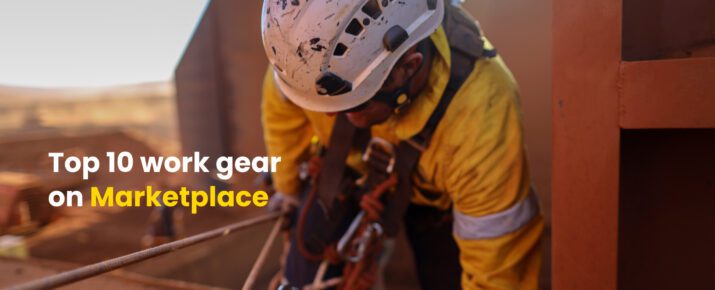Top 5 workplace safety tips from experts
Feedback From The Field | Industry Trends | By | 11 May 2021 | 8 minute read

Workplace safety tips – you’ve heard tons by now, and they’ve probably told you what you know or what you’re already doing. Although this topic has been discussed many times before, workplace safety shouldn’t be taken lightly – especially by people in leadership.
In fact, our recent report, Feedback from the Field: Under Pressure, in partnership with YouGov reveals that one in five (20%) frontline workers say they’ve experienced workplace injury due to inadequate processes or communication, while one in four (25%) know a colleague who has.

So what is workplace safety?
Workplace safety is a discipline concerning the safety, health, and welfare of both employees and the public.
There’s a common saying about how ”a safe workplace is an efficient workplace”. This couldn’t be more true since safety not only improves employee morale, but also affects productivity. Why is that? Because workplace safety isn’t just about emergency procedures, first aid, safeguards, and PPEs. It also involves strategies like maintenance, safe work procedures, and training that ultimately impacts performance.
- Never assume the safety of your workplace
- Consider the lesser-known “Unsafe Workplace Costs”
- Embrace workplace safety as an ethical responsibility
- Go beyond preventing incidents & mitigating risks
- Demonstrate how you value workplace safety daily
We interviewed experts across various industries and summarized their advice into 5 workplace safety tips:

1. Never assume the safety of your workplace
Every 7 seconds, a worker is injured on the job.
Atty. Brett Holubeck practices labor and employment law at Texas-based Alaniz Law & Associates. He shared staggering numbers about the state of U.S. workplace safety.
“On average, there are more than 14 deaths every day. These numbers represent real people whose lives and their family’s lives have been changed, sometimes forever.”
Holubeck also runs the Texas Labor Law Blog to help companies resolve common issues in the workplace. We asked him: “Who do you think should’ve taken responsibility when a workplace injury, incident, or death occurred – the worker(s) or the management? Why?”
He said that it depends on the nature of the incident, but according to his experience, it seems that companies should take more responsibility for workplace safety. He continued,
“If a worker causes an accident and is responsible for the accident, then they should take some responsibility. Sometimes, a worker fails to follow the proper procedure, is drunk or high, or simply careless and causes an incident that leads to injury or death. The company is still responsible in these situations and is liable for the injury or death. Sometimes, the company did not do enough in these situations to prevent incidents, such as failing to train supervisors and employees to recognize the signs of impairment.”
In other cases when the company is at fault, Holubeck says that the company may have failed to inspect equipment in accordance with the requirements to ensure that the equipment was in good condition, failed to train its employees properly, or had outdated or insufficient procedures.
Even when workplace injury or death is completely an accident, and no one is directly responsible, the company may still be liable for insurance purposes.
What’s one of his workplace safety tips for management?
Review every incident carefully to determine how to prevent a similar incident in the future. You can start by going through the 6 most commonly overlooked workplace safety practices.
Back your assumptions with data. Using safety inspection checklists allow teams to easily report safety issues and hazards. Data from those reports can prove useful as it gives you a better picture of how safety is being managed in your workplace. It can significantly improve your workplace safety programs and ensure a healthy environment for your employees.

2. Consider the lesser-known “unsafe workplace costs”
Of course, you know how expensive workplace injuries and deaths can be for the organization, but there are other underlying repercussions of cultivating unsafe working conditions. “Unsafe Workplace Costs” are the avoidable costs companies expose themselves to when they allow their workplace to be unsafe.
Andrew Blasi serves as a Director at Crowell and Moring International based in Washington, D.C.–a leading international trade and regulatory affairs consulting firm. He shared,
“Companies that do not provide safe working conditions for their employees are less sustainable in a global marketplace. Their customers will turn to competitors, as well as their most talented employees who are looking for a safe place to work.”
Holubeck concurred that the companies that fail to take safety seriously will not grow the same as companies that do value safety and will fail at a higher rate.
No one wants to work for a company where they do not feel safe.
You can read more of Blasi’s workplace safety tips below, but for now, English Blinds Safety Manager Sam Thomas revealed the longer-term and more acute impacts of workplace injuries and deaths. He explained,
“They are often very hard to quantify over and above the obvious, and are often connected to the mental health of the employees involved; those who witnessed it, those who tried to assist in the aftermath, and those that might have been able to prevent it. Guilt, survivor’s guilt, and even PTSD have been reported in the wake of serious workplace incidents and injuries and can, in some cases, result in people close to the incident itself feeling unable to return to their specific workplace, or even changing careers entirely.”
If you need more reasons Why Mental Health Needs to be in Your Workplace Agenda, then here you go. This emphasis on employee health in terms of workplace safety serves as a strategic measure for criminal defense and will continue to grow since it started becoming a trend in 2017.
Moreover, Thomas said that gaining a reputation for creating or failing to prevent a dangerous working environment will naturally have a knock-on effect that might cause them problems with recruitment, lead to hostility from the local community, and mean that the business suffers in more tangible ways such as insurance premiums and liability coverage.
Holubeck added, “It is very expensive for any company to have an injury or death. In 2017, the average cost for a work-related injury that required medical consultation was $39,000 and the cost per death was $1,150,000.” You can be certain that those costs have increased by now, so knowing the Types of Injuries and Workplace Illnesses that Qualify for Workers Compensation can help you stay on guard.
He recalled based on his experience, “There are some companies that skirt the law and fail to give employee safety the value that it deserves. Those companies eventually run into trouble that could have been prevented.”
3. Embrace workplace safety as an ethical responsibility
We asked the experts, “Is workplace safety an ethical responsibility or a bureaucratic activity?”
Blasi, who facilitates many of the world’s large public-private partnerships to strengthen ethical business practices, answered, “It is an ethical responsibility for all enterprises, public or private, large or small, based in developed or emerging economies, to ensure their employees work in a safe environment. Compliance with law can make workplace safety a legal responsibility for employers, which further overlays ethical responsibility.”
He also said that ethical business conduct is, at its core, a principles-based or values-based approach to the way an organization operates. Ergo, companies that value the safety and well-being of their employees should make workplace safety an ethical responsibility.
With 8 years’ experience of developing and executing plans to establish a health and safety culture, Thomas answered that workplace safety is an ethical responsibility and added, “that responsibility falls to everyone in the workplace.”
He elaborated, “Every person taking responsibility means accepting and understanding the importance of their role in keeping themselves and each other safe. Once every individual is on board with this, in practice, it would mean being conscientious about following safety protocols, being proactive about identifying issues and raising them with the chain of command promptly, and being willing to go the extra mile if needed.”
One of Thomas’ workplace safety tips for the management is to empower and encourage workers to speak up to address safety concerns, “as it is the people on the ground who are often the first to spot an issue in the making.” Here are 4 Leadership Moves to Build a Better Safety Culture and Improve Employee Mindset.
4. Go beyond preventing incidents & mitigating risks
A couple of years ago, 51% of employees said that the management does only the minimum required by law to keep employees safe. Does more than half of your organization still share the same sentiment about you?
Although Thomas admitted that there is no sure-fire way to ensure that all types of injuries and incidents are prevented in every potential scenario, he affirmed that the majority of injuries and incidents can be prevented when everyone in the workplace takes personal responsibility for the part that they each play in doing this and when the company itself is vigilant and conscientious about creating and maintaining a safe working environment and encouraging their teams to do the same.
Holubeck claimed that many companies go beyond the regulations to ensure employee safety. “For example, some companies have their worker’s compensation insurance carrier provide free training on safety topics to employees, which also happens to lower their insurance rates.”
His workplace safety tips for going beyond baseline safety are to have a weekly or daily morning meeting where safety is discussed and to create a checklist of areas and equipment that needs to be examined, when it should be examined, and a system to document that it was examined.
Consider digitizing your checklists and automating workflows, reports, and recordkeeping. Here’s The ROI of Digital Audits to help you decide.
5. Demonstrate how you value workplace safety daily
“Companies need to focus on creating a culture that values safety, which includes regular meetings on safety, reports about accidents/injuries, and proper procedures,” said Holubeck. For companies that do not have a trained safety professional, he said that they can benefit from hiring one or assigning someone those duties, if the firm does not have the resources to hire a full or part-time employee or consultant.
Furthermore, he urged, “Companies need to help employees realize the importance of reporting (i.e. someone could be hurt) and discipline employees that fail to report a safety condition or incident. [because] Sometimes employees are afraid to report on another employee that failed to follow safety procedures properly or appears to be intoxicated.”
According to Thomas, creating a cohesive team that works well together also supports a safe working environment, as each member of the team is personally invested in the others and will be committed to playing their part in keeping the workplace and each other, safe.
“It all comes down to valuing your employees, and this is a constantly evolving process, meaning employers should find increasingly more ways to foster workplace safety,” said Blasi.
He continued, “While there is still more work to do around the world to strengthen workplace safety, the environment is improving, and I believe this trend will continue so long as employers make workplace safety a key component of their values.”
Workplace Safety BONUS Tip – Pay attention and welcome feedback
Everyone in the workplace has a responsibility to safety. Ensuring that employees have proper training is important. But there’s another thing you need to pay attention to, and that is feedback.
In our research with YouGov, it was found that the majority of the frontline workers in the US, UK, and AU felt that they are never, rarely, or only sometimes listened to when it comes to topics that matter to them — operations, safety, and health/wellbeing.
Why is it important to pay attention to your workforce?
In the Made Extraordinary Summit, speaker Bob Chapman – CEO of Barry-Wehmiller, encourages leaders to “listen not to debate, but listen to understand.”
Often, your workforce knows the job better than you do. In talks about safety, it’s always good to include your people in the conversation. After all, it is their lives that are put at risk when safety protocols fail. Paying attention to their inputs makes a difference.
Effective communication is what drives safety in the workplace. In fact, it was found that 55 % of US, 64% of UK, and 59% of AU frontline workers agree that open communication is key to improving processes. When employees have the certainty that they are being heard, they are more likely to speak up and raise significant issues in the first place. Thus, avoiding things from getting worse and causing irreparable damage.
To close, we would like to quote Paul Crawford, Director of Operations at Infravision:
“We have to be learning every day and what’s critical in developing that sort of culture is the ability to report on it, to empower our workers to provide us that feedback and to track how we’re improving the workplace and our product.”
Ready to put these workplace safety tips into action? Download pre-made workplace safety topics checklists from these various workplace safety topics:
- Toolbox Talk Discussion Checklist
- Preventing Slips, Trips and Falls in the Office
- Chemical Safety
- Fall Protection
- More
Important Notice
The information contained in this article is general in nature and you should consider whether the information is appropriate to your specific needs. Legal and other matters referred to in this article are based on our interpretation of laws existing at the time and should not be relied on in place of professional advice. We are not responsible for the content of any site owned by a third party that may be linked to this article. SafetyCulture disclaims all liability (except for any liability which by law cannot be excluded) for any error, inaccuracy, or omission from the information contained in this article, any site linked to this article, and any loss or damage suffered by any person directly or indirectly through relying on this information.






